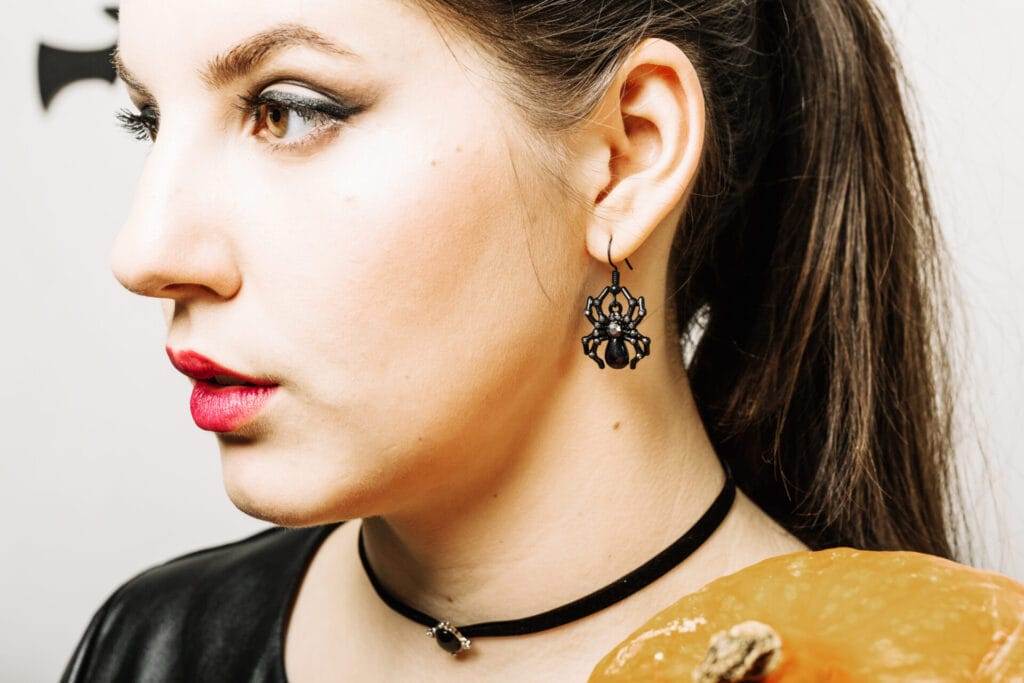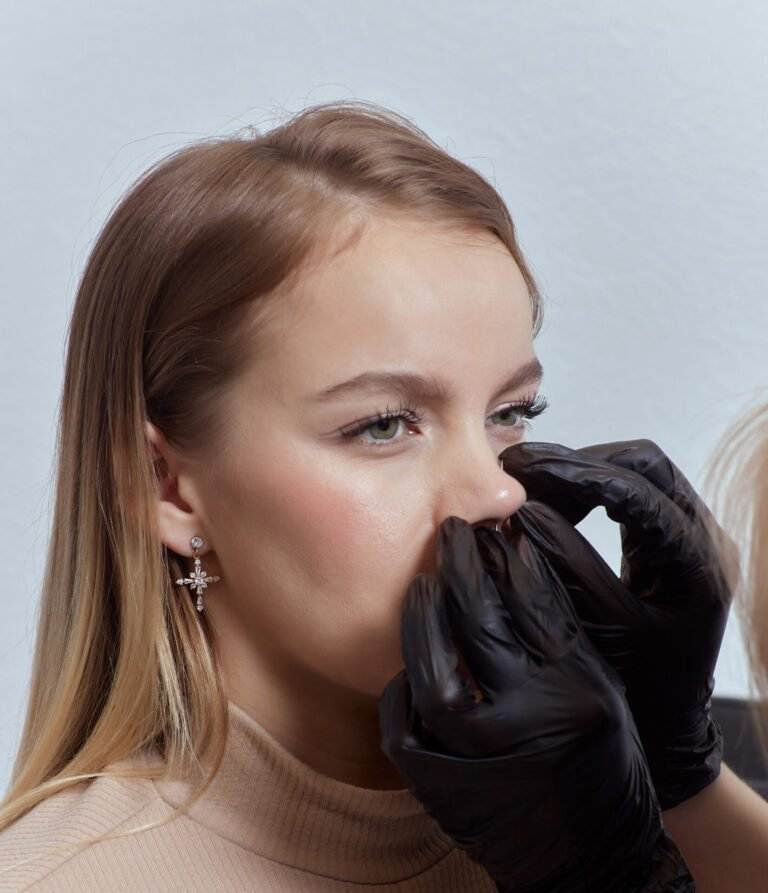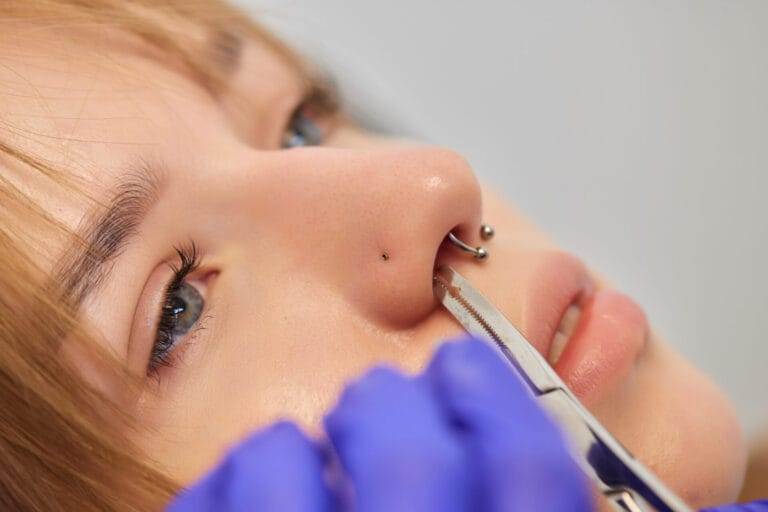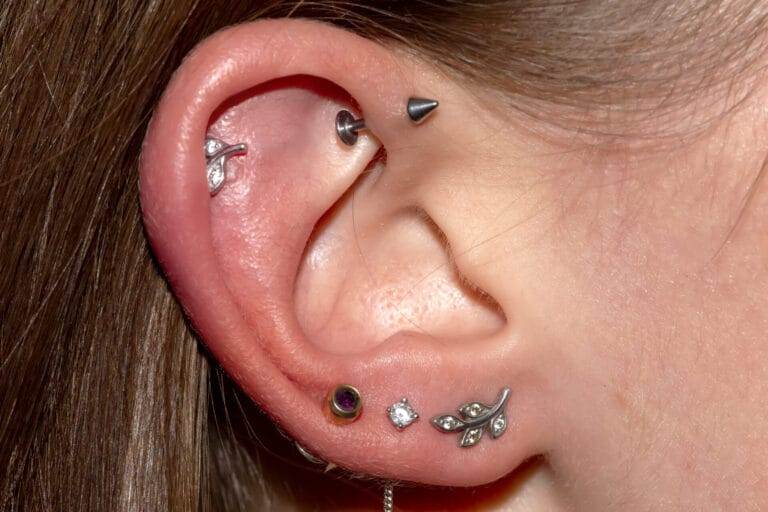Sacred piercings have a long and rich history in various cultures around the world. These piercings hold deep cultural and spiritual significance, often serving as a form of self-expression, healing, and protection. From ancient civilizations to modern society, sacred piercings have played a vital role in religious ceremonies, rituals, and traditional practices. In this article, we will explore the history of piercings in ancient cultures, the significance of sacred piercings in traditional practices, their role in religious ceremonies and rituals, how they are viewed in modern society, the connection between body modification and spirituality, the importance of choosing a reputable piercer, the healing process and aftercare for sacred piercings, the different types of sacred piercings and their meanings, the cultural appropriation debate surrounding sacred piercings, and the future of sacred piercings in a globalized world.
Key Takeaways
- Piercings have been a part of ancient cultures for thousands of years.
- Sacred piercings hold significant cultural and spiritual importance in traditional practices.
- Piercings continue to play a role in religious ceremonies and rituals today.
- Modern society has varying views on sacred piercings, but they remain an important aspect of body modification and spirituality.
- Choosing a reputable piercer is crucial for safe and respectful sacred piercings.
The History of Piercings in Ancient Cultures
Piercings have been practiced by various ancient cultures for thousands of years. In ancient Egypt, both men and women adorned themselves with piercings as a symbol of wealth and status. They believed that these piercings would bring them closer to the gods and protect them from evil spirits. The most common type of piercing in ancient Egypt was earlobe piercing, but nose and lip piercings were also prevalent.
In India, piercings have been an integral part of the culture for centuries. Nose piercings, known as “nath,” hold great cultural significance and are often worn by married women as a symbol of their marital status. These piercings are believed to enhance fertility and promote overall well-being. Other popular piercings in India include earlobe, eyebrow, and tongue piercings.
In the Americas, various indigenous cultures practiced body piercing as a form of spiritual expression. For example, the Mayans used tongue piercings as a way to communicate with the gods. They believed that by piercing their tongues, they could enter a trance-like state and receive messages from the spiritual realm. The Aztecs also practiced body piercing, particularly in their religious ceremonies, as a way to honor their gods.
The Significance of Sacred Piercings in Traditional Practices

Sacred piercings hold great significance in traditional practices around the world. In many cultures, piercings are believed to have healing properties and are used as a form of alternative medicine. For example, in Ayurvedic medicine, an ancient Indian healing system, specific ear piercings are believed to stimulate certain pressure points that can alleviate various health issues.
Piercings are also used for protection in many traditional practices. In some African cultures, for instance, certain piercings are believed to ward off evil spirits and protect the wearer from harm. These piercings are often accompanied by specific rituals and ceremonies to enhance their protective properties.
Furthermore, sacred piercings are seen as a way to connect with the spiritual realm and channel divine energy. In many indigenous cultures, body piercings are performed as part of religious rituals to honor deities and ancestors. These piercings serve as a physical representation of the individual’s devotion and commitment to their spiritual beliefs.
The Role of Piercings in Religious Ceremonies and Rituals
| Religion | Piercing Type | Meaning |
|---|---|---|
| Hinduism | Nose Piercing | Symbolizes marriage and enhances fertility |
| Christianity | Ear Piercing | Used as a form of self-expression and adornment |
| Buddhism | Tongue Piercing | Used in meditation and to enhance spiritual awareness |
| Islam | Nose Piercing | Used as a form of adornment and to enhance beauty |
Piercings play a significant role in religious ceremonies and rituals across different cultures. In Hinduism, for example, nose piercings are an essential part of the wedding ceremony for women. The piercing is performed by a priest and is believed to enhance the bride’s beauty and bring good luck to the marriage.
In some Native American tribes, body piercings are performed during coming-of-age ceremonies as a rite of passage. These piercings symbolize the individual’s transition from childhood to adulthood and their connection to their tribal heritage. The piercings are often accompanied by specific rituals and prayers to honor their ancestors and seek guidance for the future.
In certain African cultures, lip and earlobe piercings are performed as part of initiation ceremonies. These piercings symbolize the individual’s acceptance into adulthood and their readiness to take on responsibilities within the community. The piercings are seen as a way to connect with the spiritual realm and receive blessings from the ancestors.
How Sacred Piercings are Viewed in Modern Society
In modern society, the perception of sacred piercings varies greatly. While some people embrace and appreciate the cultural and spiritual significance of these piercings, others view them as a form of cultural appropriation or simply as a fashion trend.
Cultural appropriation is a contentious issue surrounding sacred piercings. It refers to the adoption or use of elements from another culture without understanding or respecting their cultural significance. When sacred piercings are taken out of their cultural context and used solely for aesthetic purposes, it can be seen as disrespectful and offensive to the cultures from which they originate.
There is also a stigma attached to body modifications, including piercings, in certain societies. Some people view them as unprofessional or rebellious, leading to discrimination in certain settings such as workplaces or educational institutions. However, attitudes towards body modifications have been changing in recent years, with more acceptance and understanding of individual expression.
The Connection Between Body Modification and Spirituality

Body modification, including sacred piercings, has a deep connection to spirituality for many individuals. For some, getting a piercing is a way to express their identity and beliefs. It can be seen as a form of self-expression and a way to connect with their inner selves.
Piercings can also serve as a reminder of one’s spiritual journey or beliefs. For example, someone may get a specific piercing to honor a deity or to symbolize a significant event in their life. The act of getting pierced can be a spiritual experience in itself, as it requires trust, courage, and a willingness to embrace change.
Furthermore, piercings can be a form of body art and a way to adorn the body in a way that reflects one’s spirituality. The choice of jewelry and the placement of the piercing can hold personal meaning and significance. It is a way to carry one’s beliefs and values with them at all times.
The Importance of Choosing a Reputable Piercer for Sacred Piercings
When it comes to sacred piercings, it is crucial to choose a reputable piercer who understands the cultural and spiritual significance behind these piercings. A knowledgeable and experienced piercer will ensure that the piercing is performed safely and with respect for the individual’s beliefs.
Safety is of utmost importance when getting any type of piercing. A reputable piercer will follow strict hygiene practices, use sterile equipment, and provide aftercare instructions to minimize the risk of infection or complications. They will also take the time to educate their clients about the healing process and answer any questions or concerns they may have.
Cultural sensitivity is another essential aspect when choosing a piercer for sacred piercings. They should have an understanding and appreciation for the cultural significance of these piercings, and they should approach the process with respect and reverence. This includes using appropriate jewelry and techniques that align with the cultural traditions associated with the piercing.
The Healing Process and Aftercare for Sacred Piercings
The healing process for sacred piercings can vary depending on the type of piercing and individual factors such as healing ability and aftercare practices. It is essential to follow proper aftercare instructions provided by a reputable piercer to ensure proper healing and minimize the risk of infection or complications.
After getting a sacred piercing, it is crucial to keep the area clean and free from irritants. This may involve cleaning the piercing with a saline solution or a mild soap and water mixture. It is important to avoid touching the piercing with dirty hands or exposing it to harsh chemicals or products.
It is also essential to avoid changing the jewelry too soon, as this can disrupt the healing process. The initial jewelry used for the piercing is typically chosen for its size and material to promote healing and minimize irritation. It is recommended to wait until the piercing is fully healed before changing the jewelry, and even then, it should be done with caution and proper hygiene practices.
The Different Types of Sacred Piercings and Their Meanings
There are various types of sacred piercings, each with its own cultural significance and meanings. Here are a few examples:
– Nose Piercing: Nose piercings are prevalent in many cultures, including India, Africa, and the Middle East. In India, nose piercings symbolize marital status and enhance fertility. In some African cultures, nose piercings are believed to ward off evil spirits.
– Earlobe Piercing: Earlobe piercings are one of the most common types of piercings worldwide. In ancient Egypt, earlobe piercings were a symbol of wealth and status. In modern society, earlobe piercings are often seen as a form of self-expression and fashion.
– Lip Piercing: Lip piercings have been practiced by various indigenous cultures around the world. In some African tribes, lip piercings are performed as part of initiation ceremonies to symbolize adulthood and connection to the spiritual realm.
– Tongue Piercing: Tongue piercings have been used in various cultures as a way to communicate with the gods or enter a trance-like state. In modern society, tongue piercings are often seen as a form of self-expression and can enhance oral pleasure.
The Cultural Appropriation Debate Surrounding Sacred Piercings
The cultural appropriation debate surrounding sacred piercings is a complex and sensitive issue. Cultural appropriation refers to the adoption or use of elements from another culture without understanding or respecting their cultural significance. When sacred piercings are taken out of their cultural context and used solely for aesthetic purposes, it can be seen as disrespectful and offensive to the cultures from which they originate.
It is important to approach sacred piercings with cultural sensitivity and respect. This means understanding the cultural significance behind the piercings, seeking permission or guidance from the appropriate cultural sources, and avoiding commodifying or appropriating these practices for personal gain.
Cultural exchange, on the other hand, can be a positive way to appreciate and learn from different cultures. It involves engaging with cultural practices in a respectful and educational manner, with a genuine desire to understand and honor their significance. It is crucial to approach cultural exchange with humility, openness, and a willingness to listen and learn from those who belong to the culture being explored.
The Future of Sacred Piercings in a Globalized World
In a globalized world, the future of sacred piercings is both promising and challenging. On one hand, increased cultural exchange and awareness can lead to a greater appreciation and understanding of sacred piercings. This can help preserve cultural traditions and promote respect for diverse spiritual practices.
On the other hand, there is a risk of cultural appropriation and commodification of sacred piercings as they become more popular in mainstream culture. It is crucial for individuals to approach these practices with cultural sensitivity and respect, ensuring that they are not appropriating or disrespecting the cultures from which these piercings originate.
The future of sacred piercings lies in striking a balance between appreciation and respect for cultural traditions while embracing individual expression and self-identity. It requires ongoing education, dialogue, and a commitment to preserving and honoring the cultural significance of these practices.
Sacred piercings have a deep cultural and spiritual significance that spans across different ancient civilizations and modern societies. They serve as a form of self-expression, healing, and protection, and play a vital role in religious ceremonies, rituals, and traditional practices. It is crucial to approach sacred piercings with cultural sensitivity and respect, ensuring that they are not appropriated or commodified for personal gain.
Choosing a reputable piercer who understands the cultural significance of these piercings is essential for safety and cultural sensitivity. Proper aftercare is also crucial to ensure proper healing and minimize the risk of infection or complications.
As sacred piercings continue to gain popularity in mainstream culture, it is important to engage in cultural exchange with humility, openness, and a genuine desire to understand and honor the significance of these practices. The future of sacred piercings lies in preserving cultural traditions while embracing individual expression and self-identity.
If you’re fascinated by the ancient traditions behind sacred piercings and want to explore modern practices, you won’t want to miss Embellish PB’s Insider’s Guide to Popular Piercings in San Diego. This informative article delves into the various types of piercings that are currently trending and provides valuable insights into the cultural significance behind them. From traditional earlobe piercings to more exotic facial piercings, this guide covers it all. Discover how ancient traditions continue to influence and shape the world of body modification today. Check out the article here.
FAQs
What are sacred piercings?
Sacred piercings are piercings that hold a significant cultural or religious meaning in various societies. These piercings are often performed as a rite of passage or to signify a person’s status within their community.
What are some examples of sacred piercings?
Examples of sacred piercings include nose piercings in Indian culture, lip piercings in African tribes, and ear piercings in various cultures around the world. Other examples include tongue piercings in Mayan culture and genital piercings in Polynesian culture.
How do ancient traditions influence modern piercing practices?
Ancient traditions influence modern piercing practices by providing a historical and cultural context for certain piercings. Many people choose to get sacred piercings as a way to connect with their heritage or to honor a particular culture. Additionally, some modern piercing techniques and jewelry designs are inspired by ancient traditions.
Are there any health risks associated with sacred piercings?
As with any piercing, there are potential health risks associated with sacred piercings. These risks include infection, allergic reactions, and scarring. It is important to choose a reputable piercer and to follow proper aftercare instructions to minimize these risks.
Can anyone get a sacred piercing?
While anyone can technically get a sacred piercing, it is important to understand the cultural and religious significance behind the piercing before getting it. It is also important to approach sacred piercings with respect and to avoid appropriating or disrespecting other cultures.






